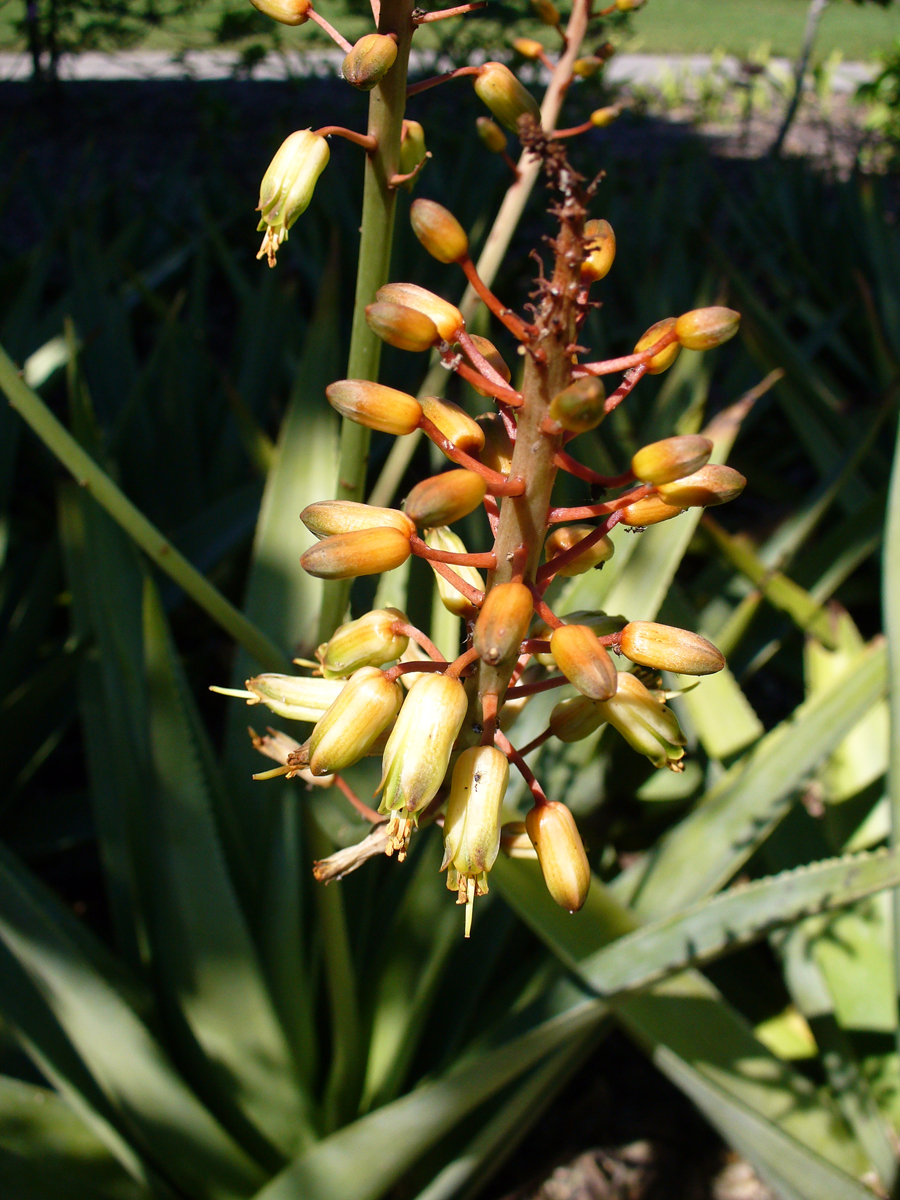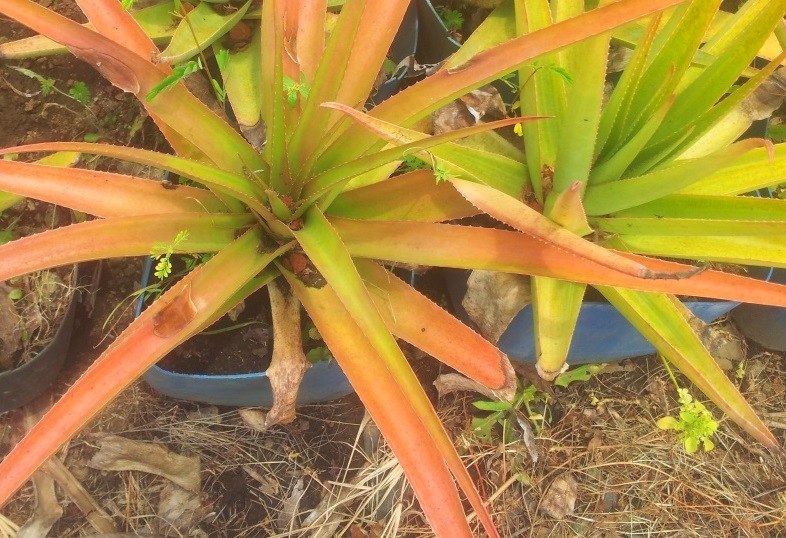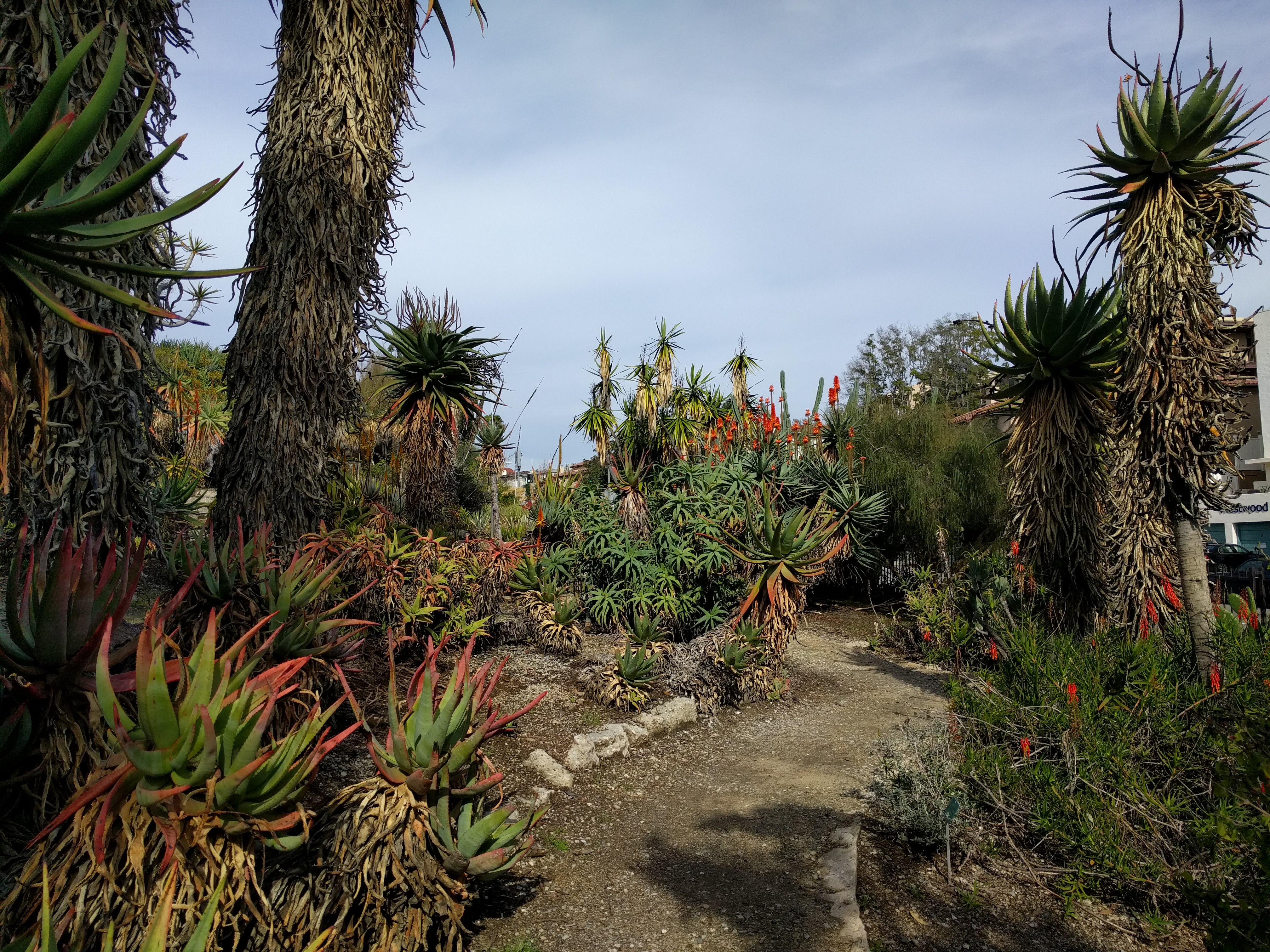|
Lomatophyllum
''Aloe'' sect. ''Lomatophyllum'' is a taxonomic section within the genus ''Aloe'', comprising between 12 and 18 closely related species of Aloe from Madagascar and the Mascareigne islands. These species are distinguished by their having fleshy berries of unwinged seeds (unlike the other ''Aloe'' species which bear dehiscent capsules of winged seeds). Description The Aloes of this section are all shrubby and form short stems, topped with succulent lanceolate leaves. The flowers appear in racemes and range in colour from orange or yellow to red. The plants produce fleshy berries which contain the seeds. Distribution The species of this section are all located on the islands of the Indian Ocean. Most are restricted to the island of Madagascar. A minority are indigenous to the smaller islands of Reunion, Mauritius, Rodrigues, Aldabra and Pemba. These form a clade that likely radiated from Madagascar following the roots of the major ocean currents. Most of the species of the smaller ... [...More Info...] [...Related Items...] OR: [Wikipedia] [Google] [Baidu] |
Aloe Tormentorii
''Aloe tormentorii'' (previously ''Lomatophyllum tormentorii''. Locally known as the "Mazambron") is a species of ''Aloe'' endemic to the island of Mauritius, in the Indian Ocean. It is one of only two ''Aloe''s to naturally occur in Mauritius - the other being the tall growing ''Aloe purpurea''. It is part of a group of aloes which bear fleshy berries, and were therefore classed as a separate group, "Lomatophyllum". Within this group, it is closely related to Madagascan ''Aloe occidentalis'' (which can be distinguished by having longer leaves, shorter inflorescence, and longer perianths, than ''Aloe tormentorii''). Description It has long straight erect or mildly curved lanceolate succulent leaves (60 cm x 15 cm), in a dense, right rosette. The leaves are a turquoise green and occasionally become a bronze colour and show a reddish margin when exposed to direct sun. Occasionally it can subdivide in offsets and older plants can even develop a thick decumbent stem. Us ... [...More Info...] [...Related Items...] OR: [Wikipedia] [Google] [Baidu] |
Aloe Prostrata
''Aloe prostrata'' (previously ''Lomatophyllum prostratum'') is a species of ''Aloe'' indigenous to Antsiranana Province (Ankarana), Madagascar. Here it grows in shady forests overlying limestone. Description This species is low-growing, non-caulescent rosette, with long (15-20mm), narrow (1.5-2mm), curved, dark-green leaves. The dark leaves have many pale, confluent spots and small (3mm) marginal teeth. The plant is mildly stoloniferous, and can form clumps. The flowers are red, and are born on a simple, cylindrical inflorescence. The fruits are long-lasting berries. ''Aloe prostrata'' subsp. ''pallida'' The subspecies ''pallida'' can be distinguished by its pallid colour. It has both paler leaves (light-green) and paler flowers (pinkish or yellow). Relatives It is part of a group of aloes which all bear fleshy berries, and were therefore classed as a separate group, ''Lomatophyllum''. Within this group it is closely related to the solitary, faintly lineate species ''Aloe ... [...More Info...] [...Related Items...] OR: [Wikipedia] [Google] [Baidu] |
Aloe Lomatophylloides
''Aloe lomatophylloides'' (the "Rodrigues aloe", sometimes known locally as "ananas marron") is a unique species of ''Aloe'' endemic to the island of Rodrigues, in the Indian Ocean. It is part of a group of aloes which bear fleshy berries, and were therefore classed as a separate group, ''Aloe'' section ''Lomatophyllum''. Description The Rodrigues aloe develops short, unbranched decumbent stems (3–4 cm diameter), topped with a loose rosette of long (50–75 cm), narrow (8 cm wide at the base), lanceolate-attenuate leaves. (In appearance, the leaves most resemble those of '' Aloe martialii'' of north Madagascar.) The leaves are highly succulent, but slender (maximum 8 cm wide at base). The leaves are dark-green, becoming pale yellow-green in sun. The flowers are similar to those of other Mascarene aloes. They appear on inflorescences, with a 10–12 cm peduncle splitting into two or three 15–30 cm racemes - usually all branching from the same ... [...More Info...] [...Related Items...] OR: [Wikipedia] [Google] [Baidu] |
Aloe Macra
''Aloe macra'' (previously ''Lomatophyllum macrum''. The "Réunion Aloe", locally known as the "Mazambron marron" or "Mazambron sauvage") is a species of ''Aloe'' endemic to the island of Réunion, in the Indian Ocean. Description The Réunion Aloe is a highly variable species, with a great many different forms. It is part of a group of aloes which bear fleshy berries, and were therefore classed as a separate group, "Lomatophyllum". Within this group, it is most closely related to ''Aloe purpurea'' of neighbouring Mauritius. The two species look very similar - in their orange-red flowers, and in their slender recurved leaves. However the Réunion Aloe is thinner, more decumbent, and usually does not grow tall stems. Its leaves do not have the pink-red colour on their margins. It can also be distinguished from ''Aloe purpurea'' by its shorter flowers and pedicels which are a much brighter red colour, and by its smaller fruits. The Réunion Aloe has a perennial lifecycle. It can ... [...More Info...] [...Related Items...] OR: [Wikipedia] [Google] [Baidu] |
Aloe Purpurea
''Aloe purpurea'' (previously ''Lomatophyllum purpureum/borbonicum/aloiflorum''. Locally known as "Mazambron" or "Socotrine du Pays") is a species of ''Aloe'' endemic to the island of Mauritius, in the Indian Ocean, where it formerly occurred on dry rocky slopes and outcrops, the highland plateaus, and the forests of the west. It is part of a group of aloes which bear fleshy berries, and were therefore classed as a separate group, " Lomatophyllum". It is also one of only two ''Aloe'' species which naturally occur on Mauritius - both endemic and occurring nowhere else. Description This highly variable species grows an erect stem 7–10 cm in diameter, and can reach a height of 3 meters (unlike its closest relative '' Aloe tormentorii'' which is usually acaulescent or decumbent). The stem is topped by a dense rosette of up to 20 leaves. Its long, slender, ensiform to lanceolate leaves are more recurved and narrower than those of '' Aloe tormentorii'', reaching a length of ... [...More Info...] [...Related Items...] OR: [Wikipedia] [Google] [Baidu] |
Aloe Alexandrei
''Aloe'' (; also written ''Aloë'') is a genus containing over 650 species of flowering succulent plants.WFO (2022): Aloe L. Published on the Internet;http://www.worldfloraonline.org/taxon/wfo-4000001341. Accessed on: 06 Nov 2022 The most widely known species is ''Aloe vera'', or "true aloe". It is called this because it is cultivated as the standard source for assorted pharmaceutical purposes. Other species, such as ''Aloe ferox'', are also cultivated or harvested from the wild for similar applications. The APG IV system (2016) places the genus in the family Asphodelaceae, subfamily Asphodeloideae. Within the subfamily it may be placed in the tribe Aloeae.Stevens, P.F. (2001 onwards).Asphodelaceae. ''Angiosperm Phylogeny Website''. Retrieved 2016-06-09. In the past, it has been assigned to the family Aloaceae (now included in the Asphodeloidae) or to a broadly circumscribed family Liliaceae (the lily family). The plant ''Agave americana'', which is sometimes called "American ... [...More Info...] [...Related Items...] OR: [Wikipedia] [Google] [Baidu] |
Aloe Socialis
''Aloe'' (; also written ''Aloë'') is a genus containing over 650 species of flowering succulent plants.WFO (2022): Aloe L. Published on the Internet;http://www.worldfloraonline.org/taxon/wfo-4000001341. Accessed on: 06 Nov 2022 The most widely known species is ''Aloe vera'', or "true aloe". It is called this because it is cultivated as the standard source for assorted pharmaceutical purposes. Other species, such as '' Aloe ferox'', are also cultivated or harvested from the wild for similar applications. The APG IV system (2016) places the genus in the family Asphodelaceae, subfamily Asphodeloideae. Within the subfamily it may be placed in the tribe Aloeae.Stevens, P.F. (2001 onwards).Asphodelaceae. ''Angiosperm Phylogeny Website''. Retrieved 2016-06-09. In the past, it has been assigned to the family Aloaceae (now included in the Asphodeloidae) or to a broadly circumscribed family Liliaceae (the lily family). The plant '' Agave americana'', which is sometimes calle ... [...More Info...] [...Related Items...] OR: [Wikipedia] [Google] [Baidu] |
Aloe Sakarahensis
''Aloe'' (; also written ''Aloë'') is a genus containing over 650 species of flowering succulent plants.WFO (2022): Aloe L. Published on the Internet;http://www.worldfloraonline.org/taxon/wfo-4000001341. Accessed on: 06 Nov 2022 The most widely known species is ''Aloe vera'', or "true aloe". It is called this because it is cultivated as the standard source for assorted pharmaceutical purposes. Other species, such as '' Aloe ferox'', are also cultivated or harvested from the wild for similar applications. The APG IV system (2016) places the genus in the family Asphodelaceae, subfamily Asphodeloideae. Within the subfamily it may be placed in the tribe Aloeae.Stevens, P.F. (2001 onwards).Asphodelaceae. ''Angiosperm Phylogeny Website''. Retrieved 2016-06-09. In the past, it has been assigned to the family Aloaceae (now included in the Asphodeloidae) or to a broadly circumscribed family Liliaceae (the lily family). The plant '' Agave americana'', which is sometimes calle ... [...More Info...] [...Related Items...] OR: [Wikipedia] [Google] [Baidu] |
Aloe Rosea
''Aloe'' (; also written ''Aloë'') is a genus containing over 650 species of flowering succulent plants.WFO (2022): Aloe L. Published on the Internet;http://www.worldfloraonline.org/taxon/wfo-4000001341. Accessed on: 06 Nov 2022 The most widely known species is ''Aloe vera'', or "true aloe". It is called this because it is cultivated as the standard source for assorted pharmaceutical purposes. Other species, such as '' Aloe ferox'', are also cultivated or harvested from the wild for similar applications. The APG IV system (2016) places the genus in the family Asphodelaceae, subfamily Asphodeloideae. Within the subfamily it may be placed in the tribe Aloeae.Stevens, P.F. (2001 onwards).Asphodelaceae. ''Angiosperm Phylogeny Website''. Retrieved 2016-06-09. In the past, it has been assigned to the family Aloaceae (now included in the Asphodeloidae) or to a broadly circumscribed family Liliaceae (the lily family). The plant '' Agave americana'', which is sometimes calle ... [...More Info...] [...Related Items...] OR: [Wikipedia] [Google] [Baidu] |
Aloe Propagulifera
''Aloe'' (; also written ''Aloë'') is a genus containing over 650 species of flowering succulent plants.WFO (2022): Aloe L. Published on the Internet;http://www.worldfloraonline.org/taxon/wfo-4000001341. Accessed on: 06 Nov 2022 The most widely known species is ''Aloe vera'', or "true aloe". It is called this because it is cultivated as the standard source for assorted pharmaceutical purposes. Other species, such as '' Aloe ferox'', are also cultivated or harvested from the wild for similar applications. The APG IV system (2016) places the genus in the family Asphodelaceae, subfamily Asphodeloideae. Within the subfamily it may be placed in the tribe Aloeae.Stevens, P.F. (2001 onwards).Asphodelaceae. ''Angiosperm Phylogeny Website''. Retrieved 2016-06-09. In the past, it has been assigned to the family Aloaceae (now included in the Asphodeloidae) or to a broadly circumscribed family Liliaceae (the lily family). The plant '' Agave americana'', which is sometimes calle ... [...More Info...] [...Related Items...] OR: [Wikipedia] [Google] [Baidu] |
Aloe Orientalis
''Aloe'' (; also written ''Aloë'') is a genus containing over 650 species of flowering succulent plants.WFO (2022): Aloe L. Published on the Internet;http://www.worldfloraonline.org/taxon/wfo-4000001341. Accessed on: 06 Nov 2022 The most widely known species is ''Aloe vera'', or "true aloe". It is called this because it is cultivated as the standard source for assorted pharmaceutical purposes. Other species, such as '' Aloe ferox'', are also cultivated or harvested from the wild for similar applications. The APG IV system (2016) places the genus in the family Asphodelaceae, subfamily Asphodeloideae. Within the subfamily it may be placed in the tribe Aloeae.Stevens, P.F. (2001 onwards).Asphodelaceae. ''Angiosperm Phylogeny Website''. Retrieved 2016-06-09. In the past, it has been assigned to the family Aloaceae (now included in the Asphodeloidae) or to a broadly circumscribed family Liliaceae (the lily family). The plant '' Agave americana'', which is sometimes calle ... [...More Info...] [...Related Items...] OR: [Wikipedia] [Google] [Baidu] |
Aloe Oligophylla
''Aloe'' (; also written ''Aloë'') is a genus containing over 650 species of flowering succulent plants.WFO (2022): Aloe L. Published on the Internet;http://www.worldfloraonline.org/taxon/wfo-4000001341. Accessed on: 06 Nov 2022 The most widely known species is ''Aloe vera'', or "true aloe". It is called this because it is cultivated as the standard source for assorted pharmaceutical purposes. Other species, such as '' Aloe ferox'', are also cultivated or harvested from the wild for similar applications. The APG IV system (2016) places the genus in the family Asphodelaceae, subfamily Asphodeloideae. Within the subfamily it may be placed in the tribe Aloeae.Stevens, P.F. (2001 onwards).Asphodelaceae. ''Angiosperm Phylogeny Website''. Retrieved 2016-06-09. In the past, it has been assigned to the family Aloaceae (now included in the Asphodeloidae) or to a broadly circumscribed family Liliaceae (the lily family). The plant '' Agave americana'', which is sometimes calle ... [...More Info...] [...Related Items...] OR: [Wikipedia] [Google] [Baidu] |





